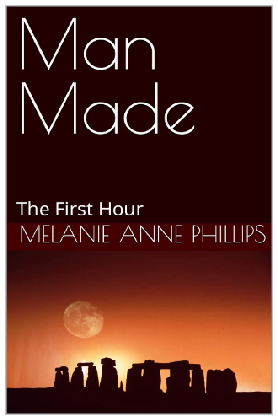Read the Science Fiction Thriller
From the founder of Storymind
Man Made follows a mysterious force as it sweeps around the globe erasing anything man made - from buildings, vehicles, and technology to medicines, clothing, and dental work.
Governments stagger under the panic, religions are at a loss for an explanation, scientists strive for any means to stop or divert the phenomenon, and the world’s population from families to individuals struggle to prepare for The Event, which will drive humanity back beyond the stone age.
The Event is coming.
Are you prepared?
~ Step 29 ~
Thematic Message
Your thematic message will explore a particular human quality such as greed, denial, or living in fantasy. The message need not be about something bad, but could be about the value of a positive quality.
The Main Character is the focus of the thematic message, as when greed is explored through Scrooge in "A Christmas Carol."
In Step 23 you gave each of your characters a personal issue that plagues them in the story. In Step 25, you chose one of these players as your Main Character. Referring to your Main Character's personal issue, describe the human quality at the heart of his or her dilemma. Then, expand on that description so that quality becomes the subject of your story's overall message as well.
If you are not satisfied with the way that human quality develops as a message, go back and re-envision your Main Character's personal dilemma accordingly until you find a shading of it that also works as the subject of the message as well.
In the next step, we’ll create a number of specific events or situations that will illustrate your novel’s thematic message throughout the story.
~ Step 30 ~
Message Illustrations
To make your thematic point, you'll need to convince your readers that what you have to say about the moral issue is true. To do this, you'll need a number of instances in which that human quality is shown to be a positive or negative thing.
Although your story’s message centers on the Main Character who grapples with the issue at a personal level, many of your other characters may be used to illustrate the value or detriment of that quality as well.
Consider all your characters as potential harbingers when creating illustrations of your message, but try to make sure the strongest instances revolve around your Main Character.
As an example, consider A Christmas Carol by Charles Dickens. While Scrooge is certainly the center of the thematic argument regarding greed, he is not the only representative of that human quality.
Consider the other businessmen who will go to Scrooge’s funeral “if a lunch is provided.” Also of note are the greedy scavengers who steel Scrooge’s drapes and sheets after he is dead. Then there are the moneylenders who shut down old Fezziwig’s business. In fact, there are scores of illustrations of the thematic message in most every great novel.
Each illustration should be a little scene in itself. It doesn’t have to be long or complex, but it does need to be a little self-contained moment that encapsulates and crystallizes an instance of your message, even if that moment is just a beat in a larger event.
So, design as many instances as is reasonably fun and comfortable, and in the next step, we’ll weave all of the thematic material you’ve developed so far into your revised synopsis.
~ Step 31 ~
Revised Synopsis
Now that you have developed a thematic topic and message issue and (hopefully) several if not many illustrations of each, it is time to work this material into your existing synopsis.
Revise your synopsis now to include all your thematic material and then polish it up for a smooth read.
